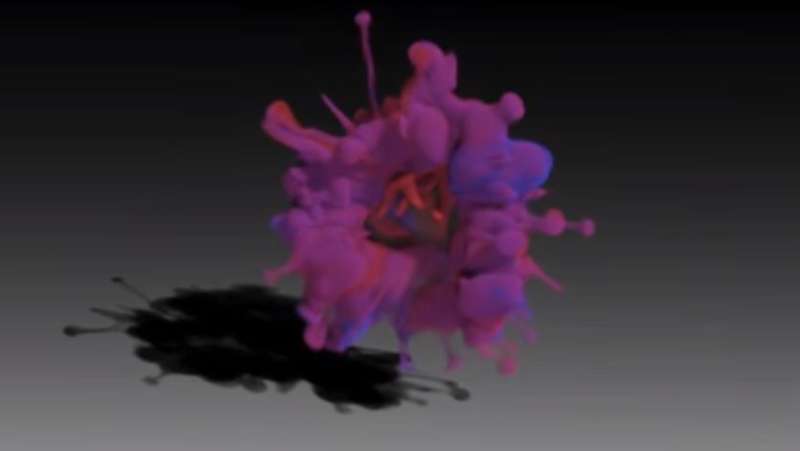Improving computer graphics with quantum mechanics

Caltech applied scientists have developed a new way to simulate large-scale motion numerically using the mathematics that govern the universe at the quantum level.
The new technique, presented at the International Conference and Exhibition on Computer Graphics & Interactive Techniques (SIGGRAPH), held in Anaheim, California, from July 24-28, allows computers to more accurately simulate vorticity, the spinning motion of a flowing fluid.
A smoke ring, which seems to turn itself inside out endlessly as it floats along, is a complex demonstration of vorticity, and is incredibly difficult to simulate accurately, says Peter Schröder, Shaler Arthur Hanisch Professor of Computer Science and Applied and Computational Mathematics in the Division of Engineering and Applied Science.
"Since we are computer graphics folks, we are interested in methods that capture the visual variety and drama of fluids well," says Schröder. "What's unique about our method is that we took a page from the quantum mechanics's 'playbook.'"
The Schrödinger equation, the basic description of quantum mechanical behavior, can be used to describe the motion of superfluids, which are fluids supercooled to temperatures near absolute zero that behave as though they are without viscosity. Viscosity is a fluid's resistance to deformation.
"Caltech's Richard Feynman was one of the first to recognize that superfluids are governed by so-called vortex filaments, which are basically long strings of pure vorticity," Schröder says. "While we are not interested in quantum mechanics, we realized that the Schrödinger equation—with some tweaks—can also approximate fluids at the macroscopic level, from smoke gently rising from a flame to the concentrated vorticity of a tornadic storm."
When asked why the Schrödinger equation, usually reserved for effects at the atomic level, does so well for fluids at the macroscopic level, Schröder says, "The Schrödinger equation, as we use it, is a close relative of the non-linear Schrödinger equation which is used for the description of superfluids. Their vorticity behavior is in many ways very similar to the behavior we can also observe in the macroscopic world."
Schröder hopes his work will have an impact on computer-generated graphics, and may also be used to model real-world phenomena, such as the curling motion of a hurricane.
Schröder's paper, entitled "Schrödinger's Smoke," was presented on July 26.
More information: Albert Chern et al. Schrödinger's smoke, ACM Transactions on Graphics (2016). DOI: 10.1145/2897824.2925868
Provided by California Institute of Technology



















